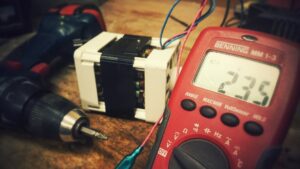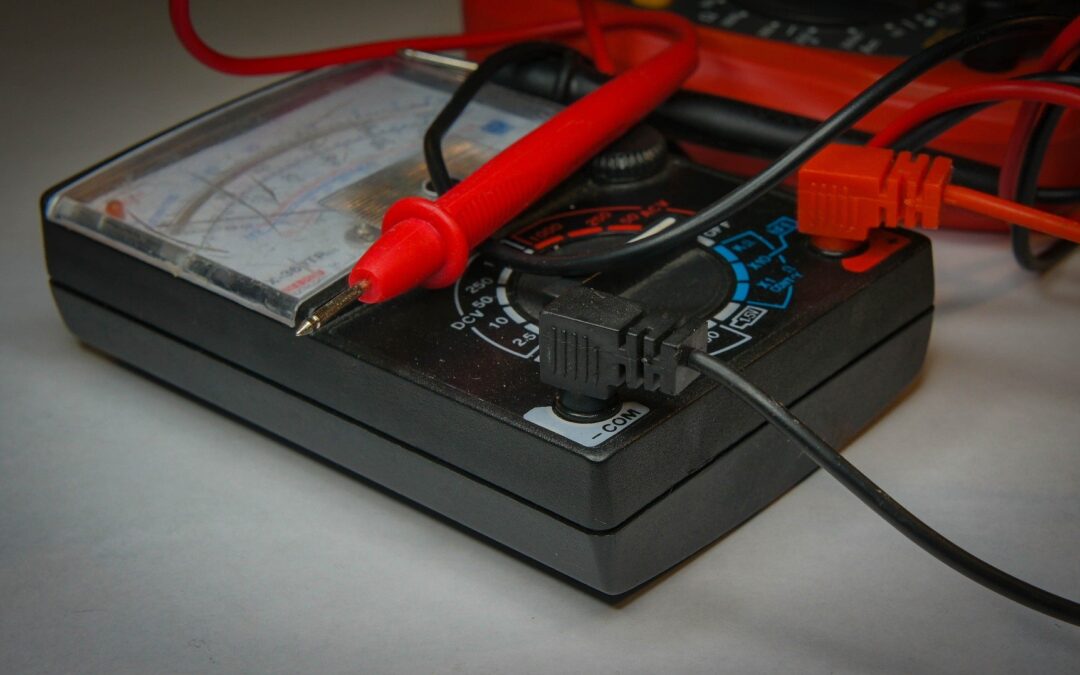 One of the most effective ways to properly test your electronic equipment is by utilizing a multimeter, also known as a VOM. If you’re unsure where your electronic item lands in terms of the life it has left, read on to find out how to test your equipment and get precise readings.
One of the most effective ways to properly test your electronic equipment is by utilizing a multimeter, also known as a VOM. If you’re unsure where your electronic item lands in terms of the life it has left, read on to find out how to test your equipment and get precise readings.
MULTIMETER
The multimeter comes in two types:
- Analog Multimeter – uses a needle to show the value of electricity in the item.
- Digital Multimeter – shows a number on the screen to report electricity in the item.
HOW TO TEST
- Disconnect your electronic item from its power source. Note: If the electronics being tested are hardwired, shut off the circuit breaker to ensure safety.
- Take the product apart in order to best assess what the problem may be. If you are unsure or unable to do this yourself, research tutorials online first or consider taking the product to an expert to help ensure your safety. Note: when working on items that generate heat, such as a microwave, isolate components from the heating circuit first.
- Now you’re ready to use the multimeter to test your electronics.
COMMON TYPES OF TESTING
A multimeter is an excellent tool for a variety of electronic tests. Below are the three most common uses for testing electronic equipment with a multimeter along with steps.
- Resistance Tests: this will tell you how much electricity flows through an electronic. Resistance testing is measured out in ohms. It’s essential to first know how much resistance the electronic should have, so you can better understand the reading.
- Continuity Tests: this will determine if electricity is able to flow correctly through a component. Set the dial to “continuity” and plug in the black and red probes. If your reading is about zero, electricity can flow through the component. If the meter reads out in one direction or another, there is a greater chance that electricity cannot flow through the electronics. Research beforehand if needed to know whether or not electricity is supposed to flow through the tested part.
- Voltage Tests: know beforehand whether the electronic you are testing is DC (direct current) or AC (alternating current). This type of testing can be dangerous, be sure you have the proper training needed or hire someone who does to make sure the electronic being tested is mechanically sound.
WHERE TO BEGIN
 It’s best to start out with a continuity test before moving onto either resistance or voltage tests. Knowing the continuity will act as a base of information for you to go off of with future testing of electronic equipment. If you have any questions, please reach out to us, and one of our experts will get back to you as soon as possible to help you properly test your electronic equipment.
It’s best to start out with a continuity test before moving onto either resistance or voltage tests. Knowing the continuity will act as a base of information for you to go off of with future testing of electronic equipment. If you have any questions, please reach out to us, and one of our experts will get back to you as soon as possible to help you properly test your electronic equipment.


